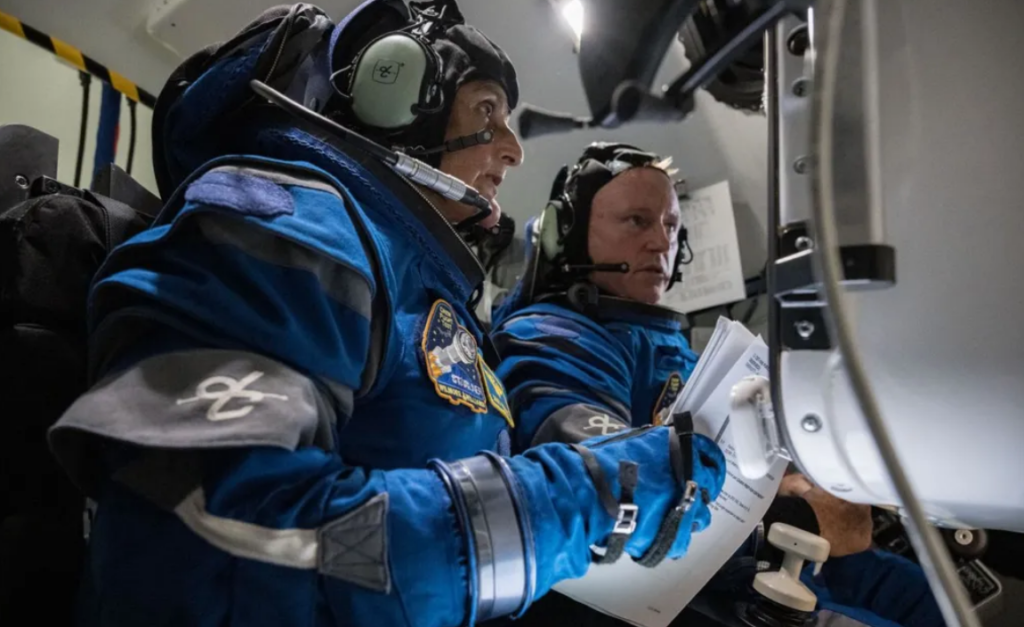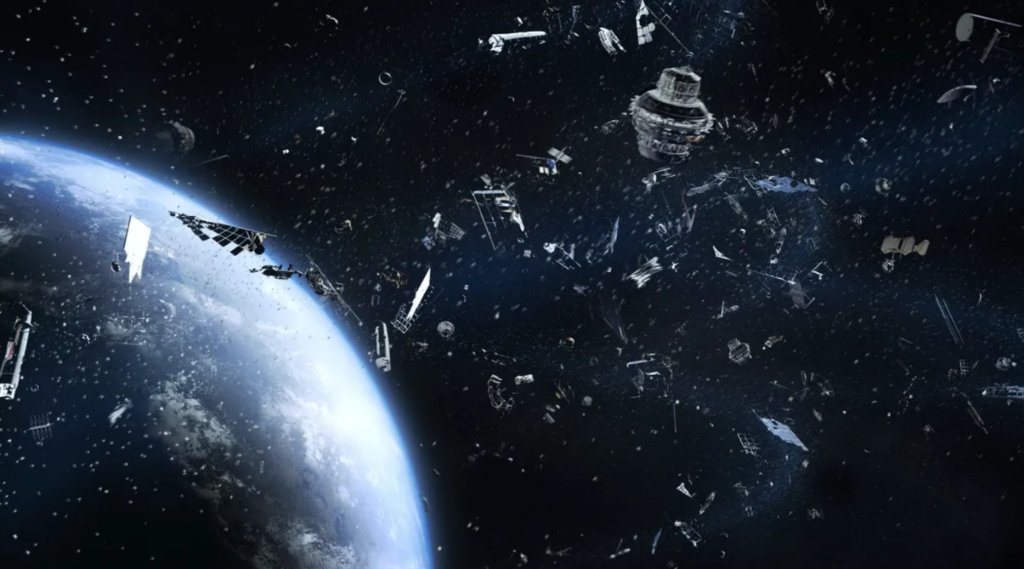Table of Contents
What happens when you’re stuck in space with no return plan? Well, such is the story of Sunita Williams and Butch Wilmore, two space astronauts indefinitely stranded in space and a no-way-home ticket.

One Boeing Starliner left Earth for a mission to conduct a crewed test flight to the International Space Station (ISS). This mission aimed to validate the spacecraft’s performance, safety, and reliability in a real-world environment, crucial steps before regular crewed missions can commence. The Boeing Starliner is a part of the NASA Commercial Crew Program and represents significant progress in American spaceflight capabilities. On an interesting note, it was also designed to reduce reliance on Russian spacecraft for transporting astronauts to the ISS.
Scheduled to return on June 13th, The Starliner is seeing a delay due to thruster failures.
The astronauts in question
Sunita Williams: Record-Setting Astronaut and All-Round Space Superstar
Sunita Williams is an American astronaut and United States Navy officer. She holds the record for the most spacewalks by a woman and the most spacewalk time for a woman. Little did anyone anticipate that she would one day hold the longest time spent walking amongst stars.

With a proven track record, Williams’s dedication to space exploration and her contributions to scientific research aboard the ISS have solidified her reputation as a pioneer in the field of space exploration.
Butch Wilmore: Seasoned Astronaut and Test Pilot
Butch Wilmore, a NASA astronaut and United States Navy test pilot, brought aboard his comprehensive experience to the mission as well. Wilmore has been on three spaceflights before, marking this as his fourth.

He is also the pilot who steered the Boeing Starliner, thereby proving his commitment and loyalty towards human space travel. His calm demeanor and technical proficiency were crucial in navigating the challenges posed by the Boeing Starliner’s mission.
Pre-Launch leak known
The return of NASA’s Starliner spacecraft has been delayed for the third time in a row. With no new date currently in sight, the astronauts Sunita Williams and Butch Wilmore seem to be stuck in space, far away from home.
However, shortly after the Boeing Starliner departed from Earth, a critical issue arose—a helium leak within the spacecraft’s propulsion system. This unforeseen complication has forced mission control to reconsider the mission’s objectives and prioritize the safety of the astronauts onboard. The leak has effectively halted the spacecraft’s journey to the ISS.

A report by CBS revealed that NASA was seemingly aware of a helium leak before the launch of the spacecraft, but considered it to be too minor to do a safety check. However, upon reaching orbit, the Boeing Starliner developed four additional helium leaks, making one particular thruster unusable.
Impact on Boeing
Given that this is Starliner’s first-ever astronaut mission, it isn’t doing very well for itself. Along with the five known helium leaks, Starline continues to experience issues regarding its reaction control system (RCS) thrusters on its way to the ISS. The capsule had 28 of these small thrusters in its service module, and five of them misbehaved at some point during the journey to orbit. Luckily, four of the five were quickly brought back online, but one remains out of commission.

However, the main issue with Starliner is its interchangeable propulsion system. This system is crucial to propel the capsule away from the International Space Station and set it up for re-entry through Earth’s atmosphere. During operation, thrusters on Starliner frequently get overheated, and helium leaks used to pressurize the thrusters seem to be in connection with such frequent overheating.
Double trouble for Williams and Wilmore: Russian satellite crash
On June 29th, the Expedition 71 Crew faced another anomaly of sorts. A defunct satellite, RESURS-P1 broke up into over 100 pieces of debris in low Earth orbit, prompting immediate action by the ISS crew. U.S. space agencies reported that this led to an increase in the amount of space debris that was already in orbit and made astronauts aboard the International Space Station take cover for about an hour.

There are no immediate details on what caused the break-up of the RESURS-P1 Russian Earth observation satellite, which was declared dead in 2022.
On the other hand, it is significant that no other satellites are currently at risk, according to the U.S. Space Command’s surveillance of the debris cloud.
NASA’s clipped response
Nasa confirmed the incident in a brief update, stating that the crew moved to their designated safe area for about an hour before being cleared to resume normal operations.
According to a report from NASA: Starliner can safely bring astronauts back to Earth if something goes wrong on the ISS.
However, the craft must not be allowed to fly home from space under normal conditions except in case of emergency. This is because its engines need fixing or improvement after some safety tests. As for the process, design, and other failures, there is an overrun of $1.5 billion on the space plane project.

At the White Sands Missile Range in New Mexico, a collaborative team of Boeing and NASA, particularly interested in the development and testing of thrusters, will attempt to use thrusters similar to those presently currently in orbit on Starliner spacecraft.
“This will be the real opportunity to examine the thruster, just like we’ve had in space, on the ground for detailed inspection.”
NASA commercial crew chief Steve Stich
It is quite clear that NASA does not consider the astronauts stranded, instead, they take preventive methods and closely watch them until the threat of debris reduces to ensure their safety. While the mission has faced setbacks, NASA has emphasized that Williams and Wilmore are not ‘stranded’ and can undock from the ISS and return to Earth whenever necessary.
The extended mission: What are they up to?
Steve Stich stated in an interview that the agency is considering extending the Starliners mission duration from 45 to 90 days.

The crew members have been busy with various activities including packing a US cargo craft, cleaning the ISS, studying futuristic piloting techniques, and conducting eye exams. For Williams and Wilmore, the unexpected turn of events posed a significant challenge. Considering the health effects space has on astronauts, their focus has shifted from conducting experiments on the ISS to managing resources and maintaining their physical and mental well-being during an extended stay in space.
Though a return date has not been set, NASA and all crew members are in good condition and are being well taken care of, with hopeful anticipation of their return soon.
Jargon Junction
Word: International Space Station (ISS)
Sentence within the article: This mission aimed to validate the spacecraft’s performance, safety, and reliability in a real-world environment, crucial steps before regular crewed missions can commence to the International Space Station.
What it actually is: Space’s equivalent of a high-altitude RV park. Complete with all the amenities needed for a lengthy stay, like oxygen and neighbors who float past your window.
Word: Space Debris
Sentence within the article: A defunct satellite, RESURS-P1 broke up into over 100 pieces of debris in low Earth orbit…
What it actually is: Space junk that orbits Earth faster than your last food delivery. Reminder: In space, littering can actually be hazardous.
Word: Spacewalk
Sentence within the article: She holds the record for the most spacewalks by a woman and the most spacewalk time for a woman.
What it actually is: A leisurely stroll but in space and with less gravity and more existential dread. Helmet required, breadcrumbs to find your way back are optional.
A spacewalk, or an “extravehicular activity,” isn’t your leisurely stroll in the park unless your park orbits Earth at 17,500 mph. Williams, however, makes it look easy, floating around like a cosmic superhero.